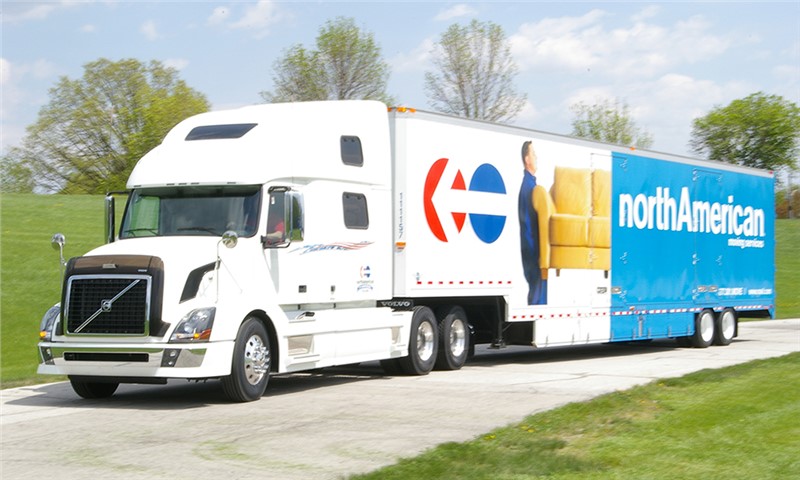Moving to a new home is a significant life event, often fraught with stress, excitement, and a seemingly endless list of things to do. Whether you’re relocating across town or across the country, the process can be daunting. For many, the key to a successful move lies in how well they prepare and organize their tasks. In the world of moving, two approaches are commonly discussed: logistics and checklists. Both are valuable tools, but which one is more effective in ensuring a smooth transition?
In this article, we will delve into the nuances of both strategies, comparing and contrasting their strengths and weaknesses. By the end, you’ll have a better understanding of which method—or combination of methods—works best for your unique moving needs.
Understanding Logistics in the Context of Moving
Logistics, in its simplest form, refers to the detailed coordination and management of resources and activities required to achieve a specific goal. When applied to moving, logistics encompasses everything from selecting the right moving company to determining the optimal time for transport, all the way to ensuring that your possessions arrive safely at their destination.
Moving logistics can be broken down into several key elements:
-
Planning and Scheduling: Timing is crucial when it comes to moving. Logistics helps determine the best dates for packing, loading, and delivery, ensuring that all steps occur in a logical sequence. For instance, you may need to align the move with the availability of professional movers or coordinate with a new landlord for access to the property.
-
Resource Management: This involves organizing the physical and human resources required for the move. Whether it’s packing materials, vehicles, or people to assist, logistics focuses on making sure everything is where it needs to be, when it needs to be there.
-
Risk Mitigation and Problem-Solving: Logistics isn’t just about managing the obvious tasks; it also involves anticipating potential hurdles and creating contingency plans. For example, if the moving truck breaks down or weather conditions delay the move, a logistics plan can include backup arrangements to minimize disruptions.
-
Coordination of Services: Movers often hire third-party services like storage facilities or cleaning companies. Logistics ensures that these services are booked and ready when needed.
At its core, moving logistics is about creating a seamless, organized flow of activities that minimizes downtime and maximizes efficiency. This approach is ideal for those who prefer to think strategically, paying attention to the big picture and ensuring that all moving components are synchronized.
The Role of a Checklist in Moving
While logistics focuses on the overall coordination and management of tasks, a checklist is a more granular tool that breaks down the moving process into smaller, manageable steps. Checklists are often used for their simplicity and clarity—they offer a tangible way to track progress and ensure that no important task is overlooked.
A typical moving checklist includes:
-
Pre-Move Tasks: These might include securing packing materials, scheduling movers, notifying utility companies of your move, and confirming travel arrangements. The checklist helps ensure that everything is done well in advance, reducing last-minute chaos.
-
Packing Instructions: Moving checklists often include detailed instructions for packing. This might involve categorizing items by room, labeling boxes for easy identification, or deciding which items need to be packed first (e.g., non-essential items) and last (e.g., daily necessities).
-
Final-Day Duties: On the day of the move, a checklist might outline the steps for a smooth departure, such as checking that all windows are closed, ensuring that nothing is left behind, and finalizing any loose ends like returning keys or cleaning the house.
-
Post-Move Tasks: Once the moving truck has been unloaded, a checklist helps prioritize post-move responsibilities, such as unpacking, setting up utilities, and changing your address with relevant authorities.
Checklists are particularly useful for individuals who are overwhelmed by the sheer volume of tasks associated with moving. By breaking everything down into digestible pieces, checklists create a sense of order and allow for easy tracking of progress. They offer a concrete, step-by-step roadmap for managing the move.
Which Method Works Best?
So, which strategy—logistics or checklists—works best when moving? The truth is, both approaches have their merits, and the ideal solution often lies in combining them to create a holistic plan.
Benefits of Logistics
Logistics is a higher-level, strategic approach to moving. Its primary strength is its focus on the bigger picture, ensuring that everything is scheduled, coordinated, and executed in an organized manner. For those moving long distances or dealing with complex moves (such as commercial relocations), logistics can make the difference between a stressful move and a smooth one. A well-thought-out logistics plan can help minimize delays, avoid surprises, and save time and money.
For example, logistics can ensure that a moving company arrives on time, that you have the correct size of truck, and that your items are transported in the safest possible manner. Moreover, logistics can involve planning around potential roadblocks, such as traffic congestion or construction, ensuring that your move proceeds without a hitch.
Benefits of Checklists
On the other hand, checklists provide structure and clarity on a micro level. They are particularly effective for individuals who need to see progress in a tangible way. If you’re the type of person who finds satisfaction in checking off items from a list, a moving checklist is a great tool to have. It provides a clear path to follow, helping you avoid the feeling of being overwhelmed by the multitude of tasks associated with moving.
A checklist also works well for individuals who are moving on their own, or in cases where you need to keep track of small but important details, such as notifying the post office or canceling magazine subscriptions. It’s the perfect way to ensure no task is forgotten, particularly when there are many seemingly small tasks that can slip through the cracks.
Combining Logistics and Checklists for a Successful Move
While each method has its strengths, the most effective approach combines logistics with checklists. A logistics plan ensures that the overall process flows smoothly, while a checklist provides a detailed roadmap of all the tasks to be accomplished. For instance, you might use a logistics plan to coordinate the best time for your move, but then employ a checklist to manage the packing, labeling, and final-day duties.
A hybrid approach allows for both big-picture thinking and attention to detail. By planning the logistics of your move and using checklists to guide your actions step-by-step, you can ensure that no task is overlooked while keeping the process organized and efficient.
Conclusion
Moving is undeniably a complex and often stressful process, but by understanding the value of both logistics and checklists, you can create a strategy that works best for you. Logistics ensures that everything is organized and scheduled efficiently, while checklists help you stay on top of every small task along the way. By combining these two methods, you can transform a potentially overwhelming move into a well-coordinated, manageable experience. Ultimately, the best approach is the one that provides you with the structure, clarity, and peace of mind you need to navigate the journey to your new home.




